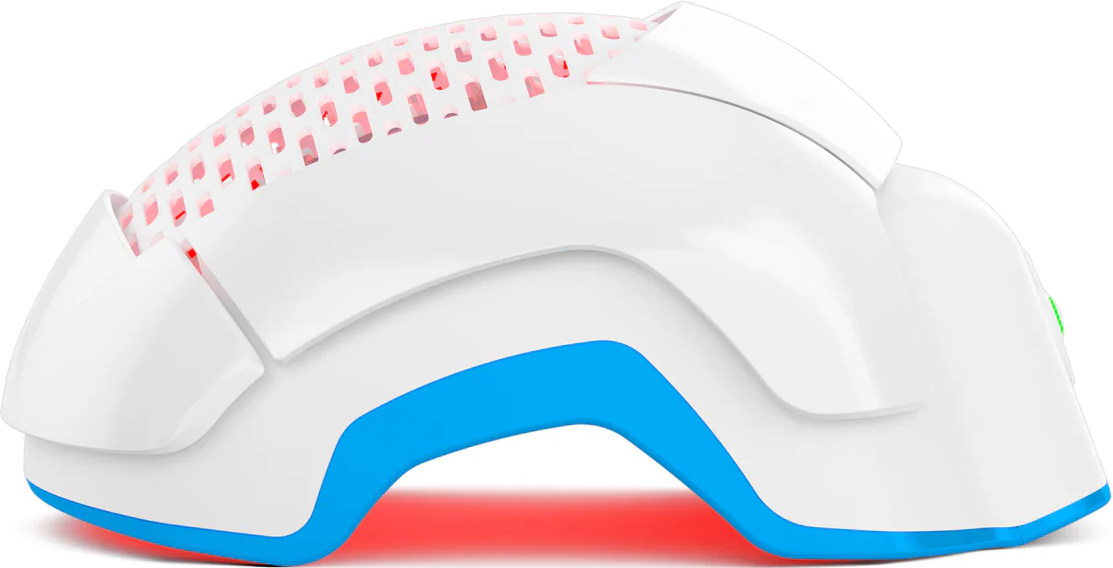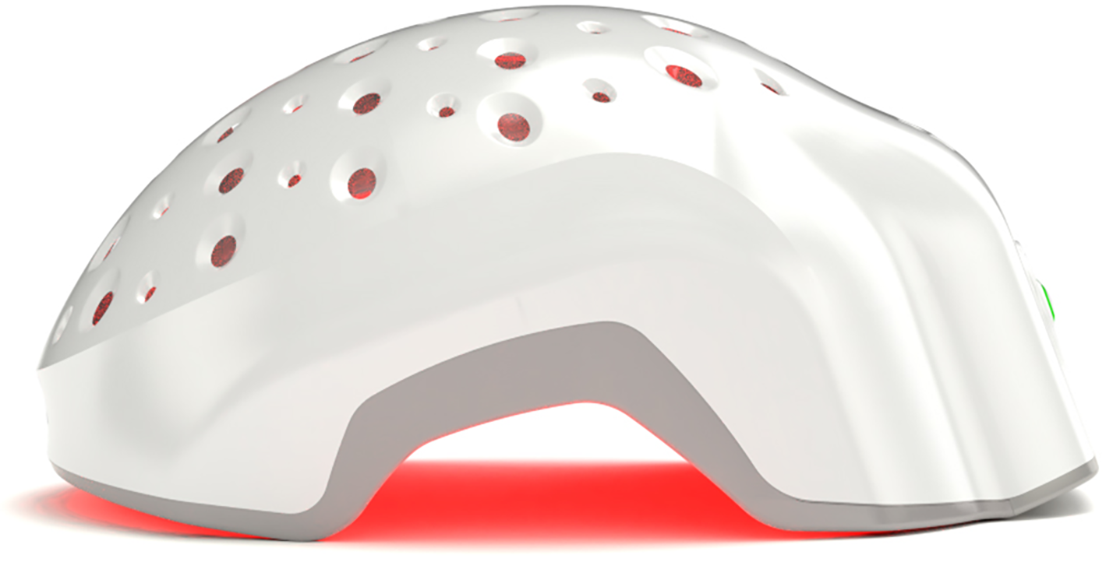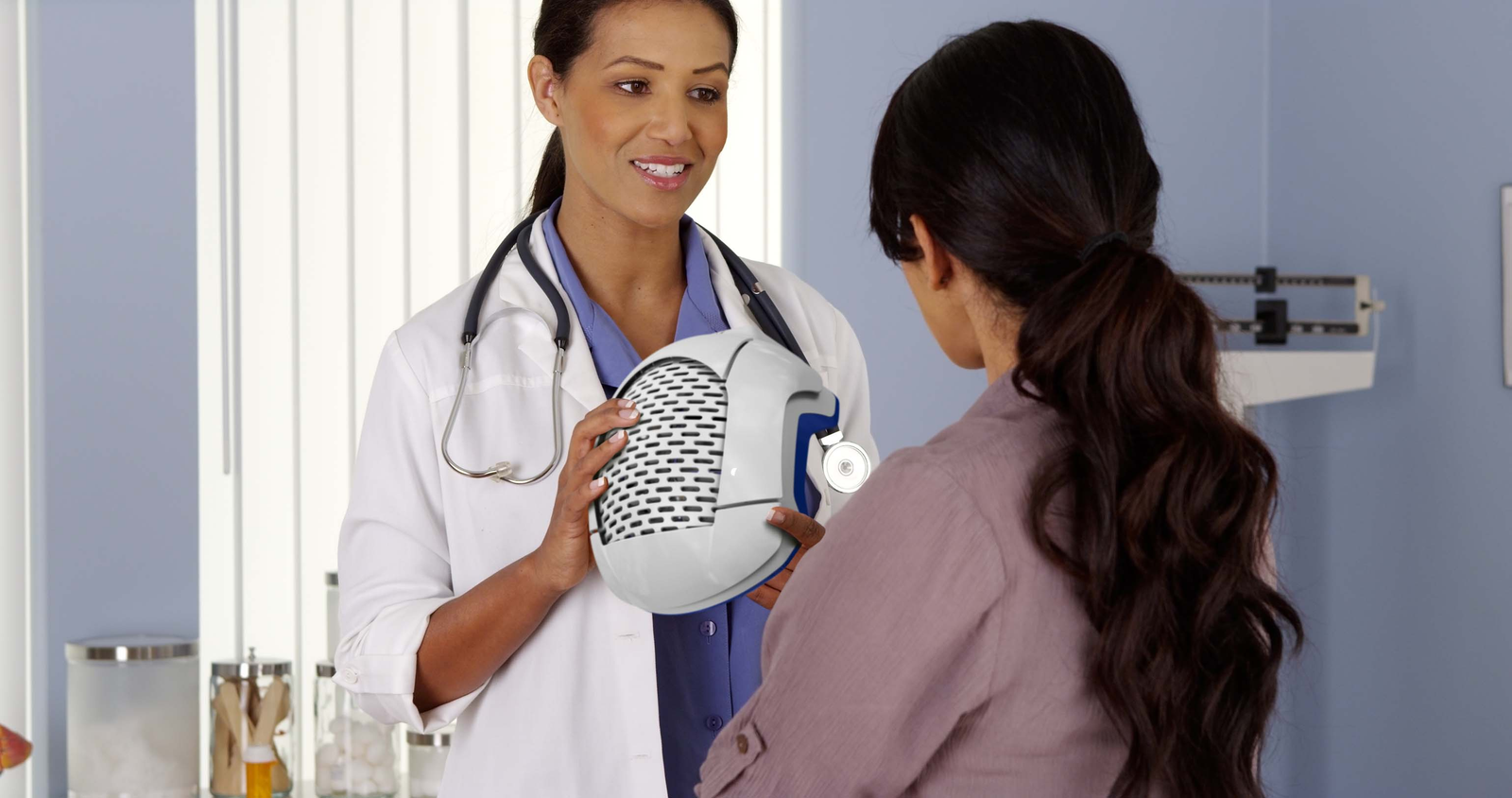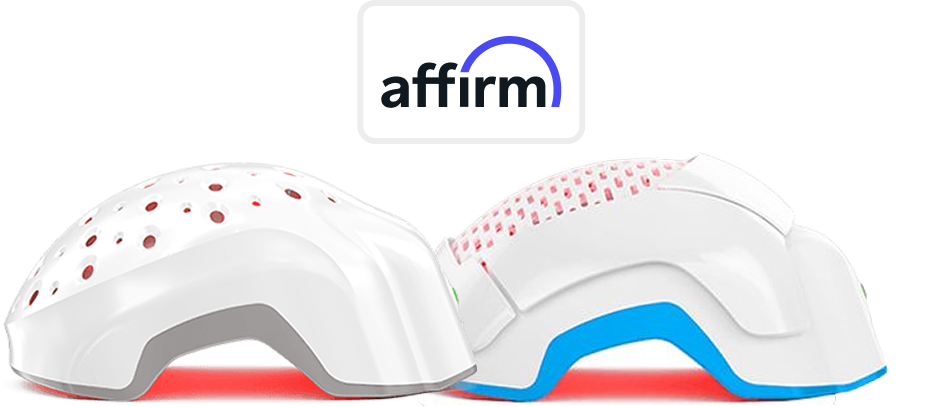Clinic-based laser hair regrowth typically costs hundreds to thousands of dollars per year because it requires frequent sessions and is usually self-pay. An at-home Laser Phototherapy (LPT) device is a one-time purchase in the ~$700–$1,000 range, then pennies per session over its lifespan. Effectiveness is supported by randomized, sham-controlled trials and systematic reviews, especially when LPT is paired with topical minoxidil.
Clinic vs. At-Home Laser Treatment: Practical Cost Estimation
When people search “how much does laser hair regrowth treatment cost,” what they’re really asking is this: Is it smarter to keep paying clinics forever, or to buy an at-home device once?
Clinic-based Laser Phototherapy (LPT):
- Requires multiple sessions per week, especially at the beginning.
- Dermatology associations like the AAD note that lasers usually need ongoing visits for maintenance.
- Costs vary by region and clinic, but patients often spend hundreds to thousands of dollars per year out-of-pocket because insurance rarely covers androgenetic alopecia treatments.
- Add in the hidden costs: gas, parking, time off work. It’s a subscription-like model with no endpoint.
At-home LPT devices:
- A one-time purchase, designed to deliver the same class of low-level, cold laser light directly to your scalp.
- Once you’ve purchased the device, the cost per session drops to pennies as you continue using it for years.
- No commute, no scheduling headaches. Just convenience.
Theradome EVO vs PRO — Actual Device Costs
- Theradome EVO (LH40): about $695 one-time.
- Theradome PRO (LH80): about $995 one-time.
- Both are FDA-cleared, medical-grade helmets. The PRO delivers more diodes and higher coverage, while the EVO offers a more budget-friendly entry point.

The Theradome EVO (LH40)’s feather-light, cordless, and ergonomically shaped for universal head sizes — so you can fold laundry, scroll your phone, or just decompress while it works. The battery runs for about 6 months of regular use per charge cycle, depending on frequency.
If you ran the numbers for EVO, the value looks just as compelling. Let’s say you used the Theradome EVO three times per week for three years — that’s about 468 sessions. At a one-time purchase of $695, your per-session cost comes out to roughly $1.48. Stretch that to five years of consistent use, and each treatment costs under $1 per session — all without scheduling, parking, or paying clinic premiums. Over time, that makes the EVO one of the most cost-efficient entry points for medical-grade laser therapy available today.
The Theradome PRO (LH80) doubles the diode count to 80 lasers, boosting total scalp coverage and photon density without increasing heat (it’s still a Class 3R “cold” laser, under 5 mW per beam). The higher diode density shortens session time while maintaining uniform light dispersion across the entire crown and hairline — areas most susceptible to androgenetic alopecia. The PRO also features enhanced ventilation channels, a more durable polycarbonate shell, smart internal sensors that auto-adjust light output, and Bluetooth capability for firmware updates and usage tracking.
Now, if you ran the same math, say you used the PRO three times per week for three years (~468 sessions). Your per-session cost averages just over $2 — cheaper than a cup of coffee. Extend that use to five years, and each session costs less than loose change. Meanwhile, clinic sessions reset the tab every visit.
Unlike pharmaceuticals that lose effect when discontinued, LPT devices maintain potential benefit indefinitely — provided consistency continues. Both models deliver cool-laser photobiostimulation, not heat; they’re entirely pain-free, non-invasive, and safe for long-term maintenance.
How Much Do Common Hair-Loss Treatments Cost?
Minoxidil (the everyday topical)
-
Typical spend: Often ~$30–$50/month retail, or ~$360–$600/year depending on brand, strength, and supply.
-
Evidence & realities: FDA-approved for pattern hair loss. Works for many, needs continuous use. Stop and the benefit wanes. The AAD frames minoxidil as a standard option.
-
Who it’s for: Men and women with androgenetic alopecia.
-
Mess factor: Real. Some tolerate foam or solutions better than others.
Finasteride (the prescription pill)
-
Typical spend: Highly variable by country and dose, often $10–$30/month with generics in the U.S.
- Evidence & cautions: Effective for many men. Contraindicated in pregnancy and associated with sexual side effects for some. Discuss risks with your clinician. The FDA label gives the formal picture.
Read More: Does Finasteride work for hair loss?
Platelet-Rich Plasma (PRP) Injections
-
Typical spend: Often $500–$1,000 per session, with initial series + maintenance; insurance rarely covers for hair loss. Authoritative health systems describe this range.
-
Evidence: Growing but heterogeneous. Some patients see thicker hair and improved density. The AAD lists PRP as an option with accumulating data.
Hair Transplant Surgery
-
Typical spend: Widely variable by grafts and technique. Professional society census data describe large market totals and emphasize that per-patient cost varies; independent analyses using ISHRS census inputs estimate per-graft averages around $3–$6 globally and total per-procedure costs in the thousands to tens of thousands. Insurance coverage is uncommon.
What’s Your Hair “Worth” If You Had To Replace It?
Let’s put it this way: hair loss isn’t just biological — it’s emotional currency. We’ve all heard someone joke about “mortgaging their soul” for a full head of hair. But what if that joke isn’t far off from reality?
According to the American Academy of Dermatology (AAD), the average person sheds 50 to 100 hairs daily — nearly 3,000 every month. If each replacement hair cost $5 to $7, your “natural shedding” translates to a monthly replacement value between $15,000 and $21,000 — just to stay even. Multiply that across a year and… you’re looking at a hypothetical “hair budget” bigger than a car loan.
With about 100,000 hairs on the human scalp, the math implies a potential replacement value between $500,000 and $700,000. That’s right; a full head of hair could be worth more than half a million dollars.
Sounds wild, doesn’t it? But this number isn’t merely financial. It’s psychological, social, and even existential.
Research shows that 63% of men said visible hair loss had negatively impacted their career confidence — and many women report similar distress in social settings. Some studies draw parallels between the emotional trauma of hair loss and major life crises like job loss or bereavement. In one German survey, men even admitted they’d trade sex for hair retention — which, depending on perspective, says something profound about self-image (yes, really).
Hair is, indeed, identity insurance. It shapes first impressions, signals vitality, and, for many, silently dictates self-esteem. Losing it chips away at more than aesthetics; it quietly rewires confidence.
So, when people hesitate at a $700 Theradome purchase, it helps to remember: doing nothing has a price, too. Not in invoices, but in self-worth erosion.
Viewed through that lens, the true “cost” of hair loss isn’t only about transplantation math — it’s about the compounded personal value you lose daily when you don’t intervene. And in that context, preventative LPT is a long-term preservation strategy for both your hair and your sense of self.
Does Laser Therapy Justify The Cost?
Often, yes — particularly for androgenetic alopecia and especially when you combine LPT with minoxidil.
-
Randomized, double-blind, sham-controlled trials showed significant increases in terminal hair density vs. sham, with minimal adverse events reported over ~24–26 weeks.
- A systematic review and meta-analysis of FDA-cleared home-use LPT devices reported positive effects on hair density versus sham. Authors still wanted more long-term data and standardization. That’s fair. Science is iterative.
- Timeframe expectations: The AAD reminds readers that laser therapy is safe and painless, but it’s a slow burn. You’ll need several sessions per week for months to see benefit, and maintenance to keep it.
Does higher price mean better results?
Not automatically. Outcomes hinge on diagnosis, remaining follicle reserve, adherence, and combination strategy — not just price tags.
Who Benefits Most From LPT?
People with early to moderate androgenetic alopecia usually do best. You need a viable follicle reservoir. Completely slick areas seldom respond to light alone. Many dermatology sources position lasers as a logical adjunct to staples like minoxidil, sometimes alongside PRP or post-transplant care.
If you’re comparing clinic vs. home, consider time, budget, and your own consistency. Honestly, the “best” is the one you’ll actually use.
Safety, FDA Status, And The Hollywood Problem
“Laser” conjures sci-fi images. The medical reality for hair regrowth devices is… tame. Home devices cleared for pattern hair loss go through FDA 510(k) review for substantial equivalence. Many reference Class 3R low-power laser characteristics in filings. You still need to follow instructions and protect your eyes. But burning is not the objective here; photobiomodulation is.
If you enjoy reading the technicals, the FDA also maintains a helpful overview of laser product classes and consumer laser safety guidance. Worth a skim.
Coverage, Financing, And The “Who Pays?” Reality
Most health plans do not cover LPT for androgenetic alopecia. Major payers classify LLLT/LPT for hair regrowth as not medically necessary, while covering low-level lasers for a different indication such as mucositis prevention. That’s coverage reality, not a verdict on efficacy. UK readers see similar out-of-pocket expectations for many hair-loss treatments via the NHS.
So, budget for it yourself. If you want to minimize long-term spend, weigh one-time device vs per-visit models.
Long-Term Value And ROI
When you spread an at-home LPT device across years (and even across a household) the per-use cost falls to pocket change. Pair that with the stabilization effect many see and the RCT-backed density gains, and the math often favors home use for long-term maintenance.
Remember that “replacement value” thought experiment earlier. Preventing ongoing miniaturization is almost always the better bargain than trying to “buy back” hair later.
Save Your Hair and Money With Theradome
Laser hair regrowth isn’t free, but neither is doing nothing about progressive loss. Clinic treatments demand recurring sessions and ongoing spend, while FDA-cleared at-home devices like Theradome fold years of use into a single outlay. The clinical evidence is solid enough to say LPT can support density, diameter, and stabilization in androgenetic alopecia — provided you stick with it.
If your goal is to minimize daily shedding costs, preserve what you have, and give follicles a longer, healthier run, then investing early makes more sense than trying to replace hair later. Transplants, foams, and pills all have their place, but LPT offers a rare mix of convenience, tolerability, and long-term affordability.
At the end of the day, your hair is worth protecting. The math points one way, but so does quality of life.
Here is another interesting article on hair loss treatment costs: Comparing the cost of 4 different hair loss treatments






















